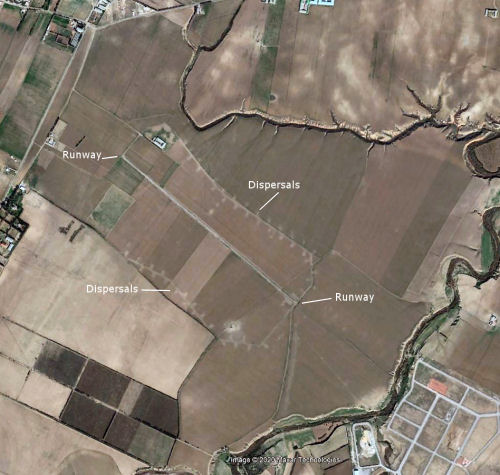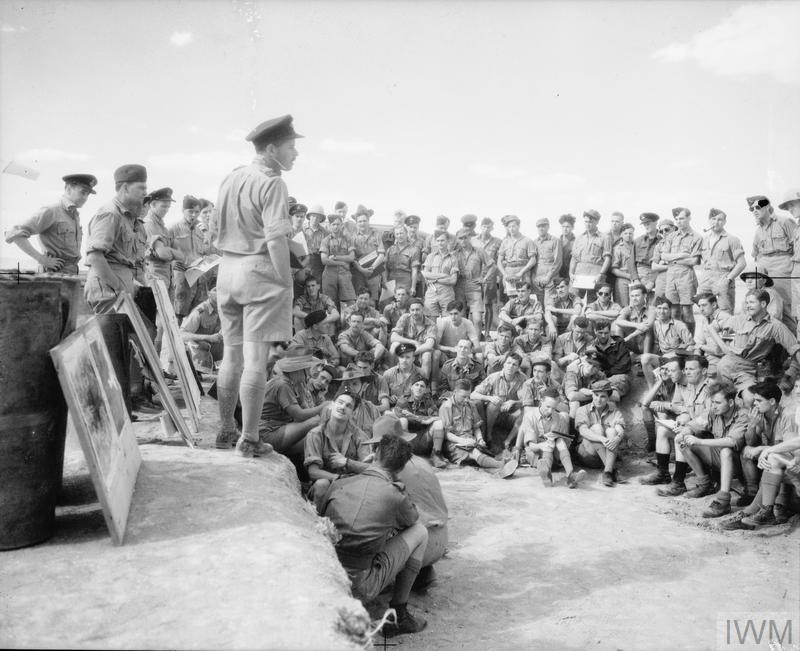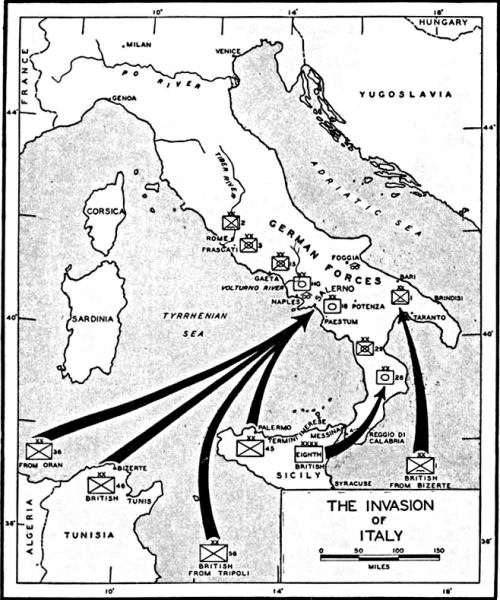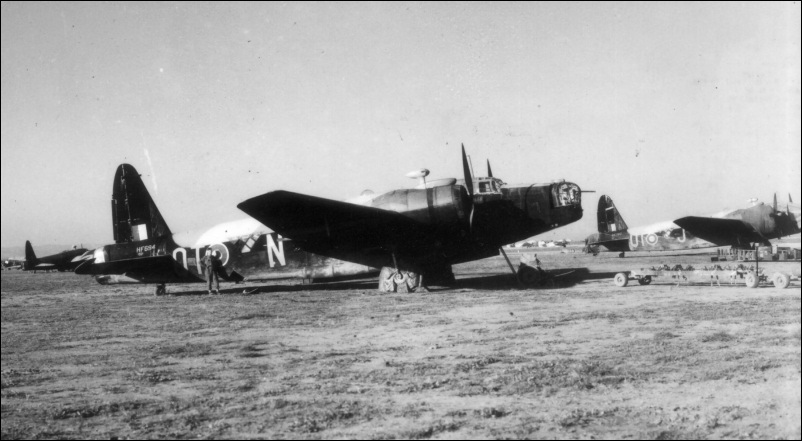Chapter 6 - Squadron Operations
|
|
The city of Tunis fell to the Allies in May 1943. At the Washington Conference in the same month, Prime Minister Churchill persuaded the American leaders to endorse the invasion of Sicily. This took place as Operation Husky in July 1943. In so doing much of the threat to Royal Navy shipping in the Mediteranean was reduced. There then followed much debate about the next step. Prime Minister Churchill was keen to invade Italy and thus tie down Axis forces. The decision was made to proceed. Mussolini lost a vote of confidence on 25th July and the following day the King of Italy, Vittorio Emmanuelle III dismissed the fascist party. Secret armistice approaches were then made to the Allies On 3rd September 1943 the British 8th Army landed in Southern Italy in Operation Baytown. Six days later, the American 5th Army landed at Salerno in Operation Avalanche and experienced heavy German resistance. Further British forces landed at Taranto in Operation Slapstick and were almost unopposed. Adolf Hitler had originally been persuaded that Southern Italy held little strategic importance. Initially the 8th Army made good progress heading north up the east coast capturing the port of Bari and several airfields around Foggia. As intended by Churchill, bombers operating from Tunisia carried out missions in support of land forces on mainland Italy. Field Marshall Kesselring was determined to halt the allied advance and established a series of defensive lines eventually falling back to what became known as the Gustav Line. The mountainous terrain worked in favour of the Germans who were able to delay allied advances in battles such as that at Monte Cassino. The first and most southern line was the Volturno Line which roughly followed the River Volturno just north of Naples.
|
____ooOOOoo____
There is no record of how long Stephen and his colleagues spent in hospital but 142 Squadron's operational records show them first participating in operations on the night of 1st October 1943. Their target being bridges over the River Volturno shows that they were now participating in operations in support of Allied ground operations in Italy. The crew now included Sgt Orr as Rear Gunner.
(The following are extracts from the Operations Record Book (ORB) of 142 Squadron [10])
| 1/2 October 1943 |
Wellington Mk X |
Sgt Betts (Pilot) |
Up 19:39 Down 02:53 |
2 x 1000, 5 x 500 bombs. Target: bridges over river Volturno. "Bombed E side of bridge, bursts not seen". |
| 10/11 October 1943 |
Wellington Mk X |
Sgt Betts (Pilot) |
Up 16:45 Down 22:15 |
7 x 500, 4 x 250 bombs. Target Terracina. |
| 13/14 October 1943 |
Wellington Mk III |
Sgt Betts (Pilot) |
Up 21:29 Down 22:16 |
7 x 250, 4 x 250 bombs. Target Orbetello. |
Flooding of the airfield at Kairouan would seem to explain a break in operations. Runways and dispersals were noted to be unserviceable with thick mud. The runways were recorded as being serviceable on 4th November but another storm, reported as being worse than that on 26th October, caused more flooding on 5th November. Again, runways, dispersals and roads became unserviceable.
| 10/11 November 1943 |
Wellington Mk X |
Sgt Betts (Pilot) |
Up 17:25 Down 03:05 |
Florence, Leghorn, Spezia 200,000 nickels dropped as ordered. (Leghorn was the English name for Livorno. "Nickels" was the nickname given to propaganda leaflets which were often dropped to warn civilians in advance of bombing) |
| 12/13 November 1943 |
Wellington Mk III |
Sgt Betts (Pilot) |
Up 19:50 Down 04:26 |
4 x 500, 2 x 250, 16 x 30 bombs. |
This sortie was significant for two reasons. Firstly Sgt Orr was replaced by Sgt Barton as rear gunner. The Operations Record Book in fact shows Sgt Orr's name crossed through. Secondly, the crew changed aircraft to Wellington Mark III, registration HF694, callsign "F" for Freddie.
On the same night one aircraft Wellington X "V" HE929 piloted by Flt Sgt Wade successfully dropped 167,000 leaflets on Turin. This may have been to warn civilians of the imminent bombing which was to be attempted on the 24th November.
|
This image [28] appears in "Wellington Squadron in Focus" by Paul Freer and Simon Parry. It is shown here by courtesy of Mark Postlethwaite of www.ww2images.com The aircraft bearing call-sign QT-J is DF702 |
|
Recognising the continued problems with flooding at Kairouan, 142 Squadron started to move and establish operations on another landing ground at Oudna, being just 15 miles south of Tunis. It was not until the night of 22nd November that operations were resumed.
 |
This Google Earth image shows what is believed to have been Oudna airfield from where Stephen's squadron operated. The airfield is at 36°38'09.2"North, 10°05'48.9"East. Just visible is the former runway which seems to have been over 5,900 feet long, now connected to local roads, and surrounded by a peri-track and multiple dispersals. © 2020 Maxar Technologies |
| 22/23 November 1943 |
Wellington Mk III |
Sgt Betts (Pilot) |
Up 17:29 Down 17:50 |
Bomb load not recorded. |
In his book "They Also Served" [29] Les Hather, who served with 104 Squadron, had a similar mishap. He explains that with the flap not secured correctly, the air flow over the wing becomes interrupted thus affecting its flying characteristics. Having survived his incident, Les notes that other pilots failed to control their aircraft with fatal results. Stephen's pilot, Sgt Betts, succeeded in getting their aircraft
safely back onto the ground. Depending on how the bombs were fused, their return was potentially very hazardous.
____ooOOOoo____
At some time on the 23rd of November, Stephen wrote a Christmas card to his parents. The card shows that it had been bought from the Malcolm Club:
|
|
|
The card is the last known message from Stephen to his parents (and is believed to have been recovered from the crash scene).

Wing Commander A A N Malan, CO of 150 Sqn briefing his squadron and 142 Sqn © IWM (CNA 1088)
As is noted in the Operations Record Book of 142 Squadron, Stephen and his crew departed Oudna in Tunisia at 16:47 hours on 24th November 1943.
| 24/25 November 1943 |
Wellington Mk III |
Sgt Betts (Pilot) |
Up 16:47 |
6 x 500, 2 x 250 No News |
The Summary of Events for 142 Squadron provides the following account:
|
Place: Oudna |
The Summary of events provides one further record:
|
Place: Oudna |
From this summary, it is evident that 142 Squadron lost twenty one crew members of four aircraft.
From the limited information available RAF bombers at this time were organised as follows:
| 205 Group | 231 Wing | 37 Squadron |
| 40 Squadron | ||
| 70 Squadron | ||
| 236 Wing | 104 Squadron | |
| 330 Wing | 142 Squadron |
Elsewhere, the comment in the Summary of Events for 37 Squadron gives some indication of the feelings after the operation: "This disastrous operation cost the Squadron two complete crews and four aircraft. In the whole Group, there was a loss of 15 aircraft engaged in this same operation."



